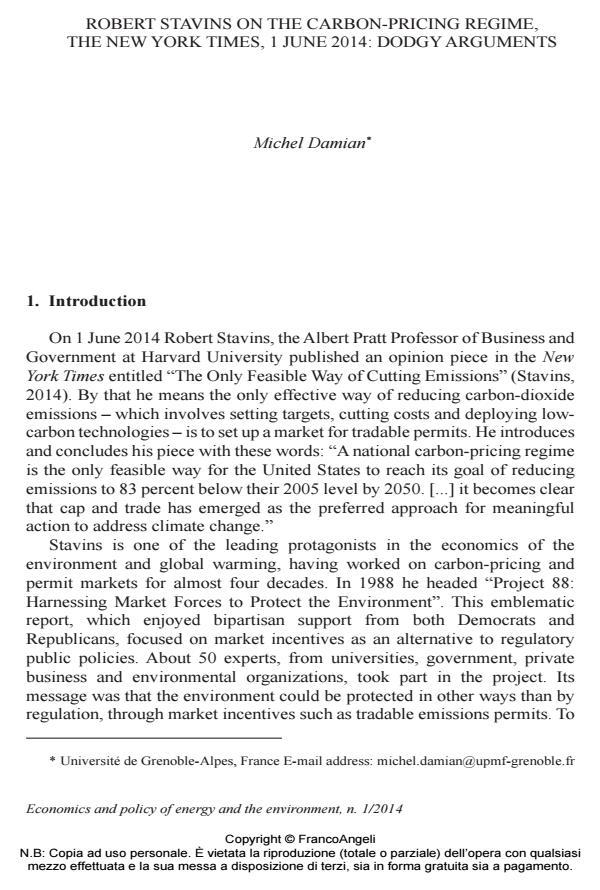Robert stav ins on the carbon-pricing regime, the New York times , 1 june 2014: dodgy arguments
Titolo Rivista ECONOMICS AND POLICY OF ENERGY AND THE ENVIRONMENT
Autori/Curatori Michel Damian
Anno di pubblicazione 2014 Fascicolo 2014/1
Lingua Inglese Numero pagine 9 P. 53-61 Dimensione file 127 KB
DOI 10.3280/EFE2014-001003
Il DOI è il codice a barre della proprietà intellettuale: per saperne di più
clicca qui
Qui sotto puoi vedere in anteprima la prima pagina di questo articolo.
Se questo articolo ti interessa, lo puoi acquistare (e scaricare in formato pdf) seguendo le facili indicazioni per acquistare il download credit. Acquista Download Credits per scaricare questo Articolo in formato PDF

FrancoAngeli è membro della Publishers International Linking Association, Inc (PILA)associazione indipendente e non profit per facilitare (attraverso i servizi tecnologici implementati da CrossRef.org) l’accesso degli studiosi ai contenuti digitali nelle pubblicazioni professionali e scientifiche
This commentary discusses the opinion piece published on 1 June 2014 by Professor Robert Stavins in The New York Times. Professor Robert Stavins argues that "The Only Feasible Way of Cutting Emissions" is to set up a market for tradable permits. We review and criticize his mains arguments. Our purpose here is not to deny the possibility of carbon trading, but to call for a realistic assessment of the deployment of cap-and-trade systems and their limitations.
Parole chiave:Cap-and-trade, Command and control, Lead in gasoline, SO2 emissions, California AB32, Climate Change
Jel codes:H23, Q54, Q58
- Les grandes orientations de l’accord climatique de Paris 2015 Michel Damian, Mehdi Abbas, Pierre Berthaud, Catherine Aubertin, Michel Damian, Michel Magny, Claude Millier, Jacques Theys, Sébastien Treyer, in Natures Sciences Sociétés /2015 pp.S19
DOI: 10.1051/nss/2015015
Michel Damian, Robert stav ins on the carbon-pricing regime, the New York times , 1 june 2014: dodgy arguments in "ECONOMICS AND POLICY OF ENERGY AND THE ENVIRONMENT" 1/2014, pp 53-61, DOI: 10.3280/EFE2014-001003